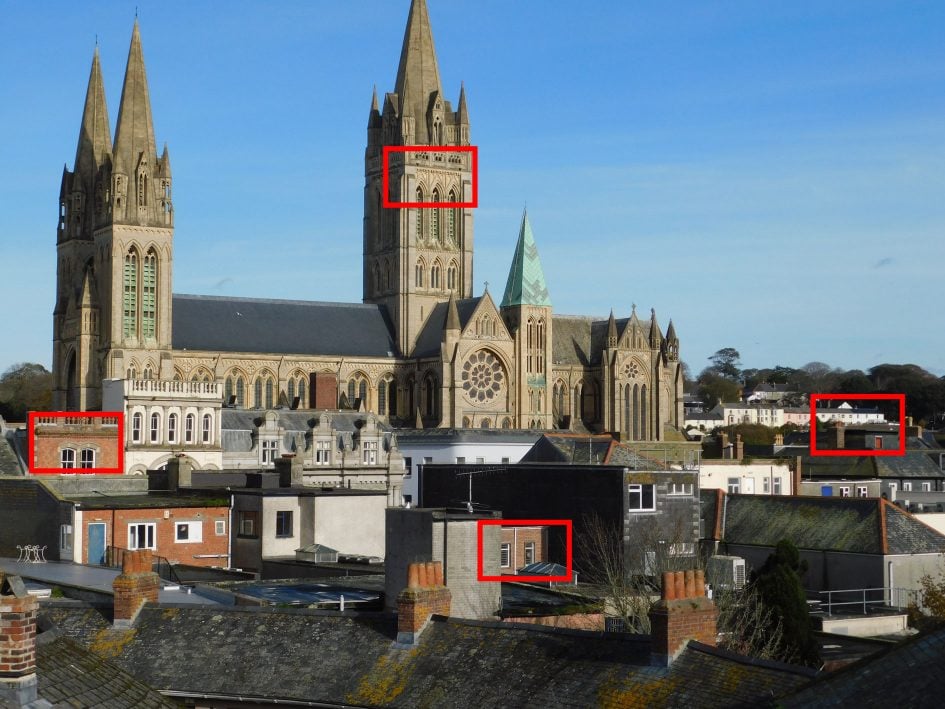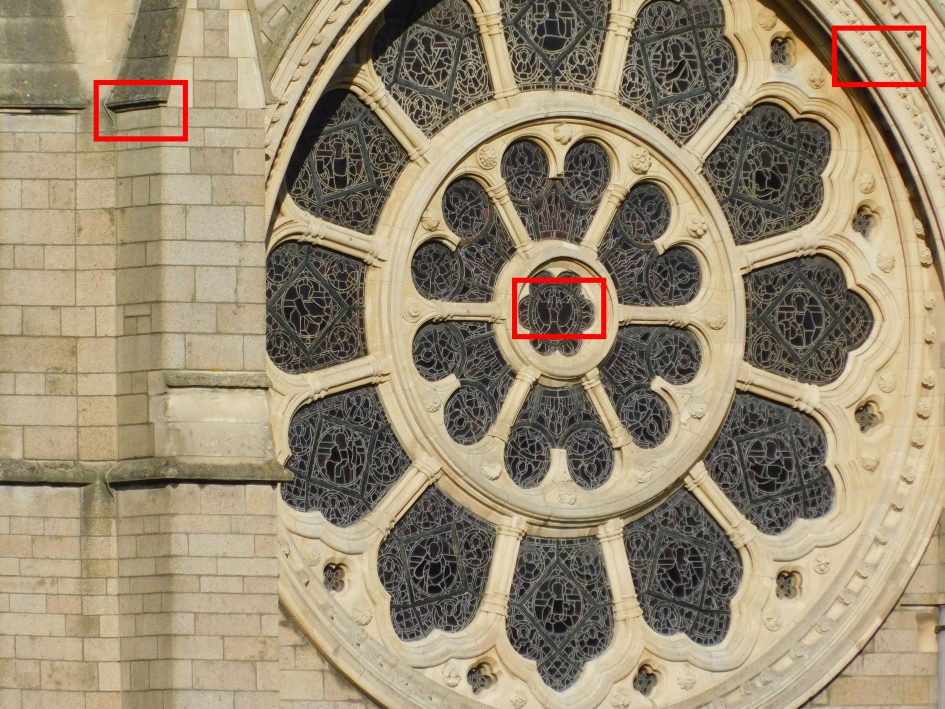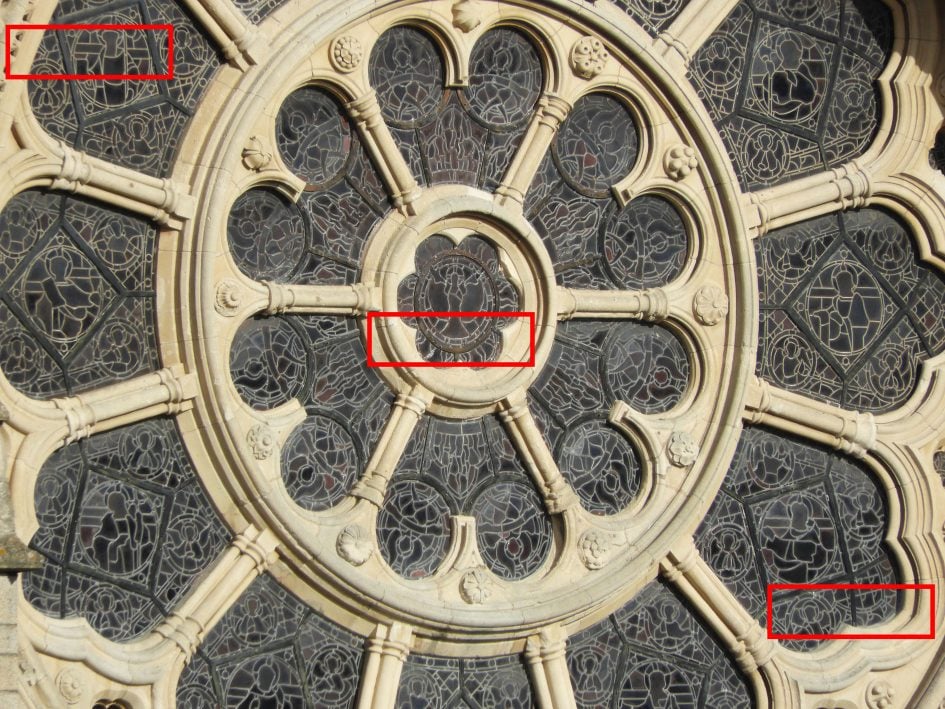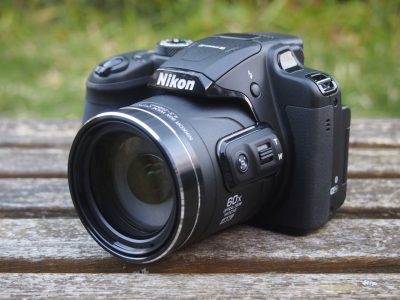Nikon COOLPIX B700 review
-
-
Written by Ken McMahon
Quality
Nikon COOLPIX B700 vs Nikon COOLPIX B500 JPEG quality
To compare real-life performance, I shot this scene with the Nikon COOLPIX B700 and the Nikon COOLPIX B500 within a few moments of each other, using their best quality JPEG settings and at their base sensitivity settings. For this test the cameras were mounted on a tripod and image stabilisation was disabled. The COOLPIX B500 was zoomed in a tad to provide the same field of view as the B700 at its 4.3mm maximum wide angle setting and the ISO sensitivity was manually set to the lowest available setting.
I set the COOLPIX B700 to Aperture priority mode and selected the widest available aperture which is f3.3. At its base sensitivity setting of 100 ISO the COOLPIX B700 chose a shutter speed of 1/1600. The COOLPIX B500 was set to Auto mode and selected an exposure of 1/1250 at f3.1 set to its base 125 ISO sensitivity setting.
Firstly I’ll point out that the 20 Megapixel sensor of the COOLPIX B700 produces a smaller crop area with slightly larger details than the 16 Megapixel sensor of the COOLPIX B500. The crops below are taken from the areas marked in red opposite.
The COOLPIX P700 doesn’t get off to a brilliant start; the first crop from close to the left edge of the frame is very soft and there’s a little bit of blue colour fringing around the left edge of the chimney stack. However, the situation is dramatically imnproved in the second crop from the middle of the frame and here there are lots of crisp clean edges. The third crop is also from the middle of the frame and there’s good level of detail, you can make out some, though not all of the delicate pattern in the stonework, which is about as much as you could expect from the 1/2.3in sensor in the COOLPIX B700.
Compared with the crops from the COOLPIX B700, the B500 stands up pretty well. The first crop from the B700 is a little sharper and, though there is some colour fringing, it’s blue, rather than red and not so visible. Overall the COOLPIX B700 crops are a little more contrasty and that makes them look a bit sharper, but I reckon there’s also more detail being delivered by B700’s lens and sensor combination.

Above left: Nikon COOLPIX B700 JPEG f3.3, 100 ISO. Above right: Nikon COOLPIX B500 JPEG f3.1, 125 ISO

Above left: Nikon COOLPIX B700 JPEG f3.3, 100 ISO. Above right: Nikon COOLPIX B500 JPEG f3.1, 125 ISO

Above left: Nikon COOLPIX B700 JPEG f3.3, 100 ISO. Above right: Nikon COOLPIX B500 JPEG f3.1, 125 ISO

Above left: Nikon COOLPIX B700 JPEG f3.3, 100 ISO. Above right: Nikon COOLPIX B500 JPEG f3.1, 125 ISO
Nikon COOLPIX B700 quaility at approximtely 60mm equivalent

For this next test I zoomed both cameras in to roughly 60mm equivalent. As before the crops below are taken from the areas marked in red above. Again, the first crop from the COOLPIX B700 is slightly soft, but there’s an improvement here over the crop taken from roughly the same place at the wide angle setting. In fact overall I’d say the B700 lens performs better slightly zoomed in with sharper detail across the frame. The COOLPIX B500 crops look a little softer and less contrasty than those from the B700, and there’s still just a smidgeon more detail in those from the B700. Scroll down for results at a longer zoom, or head to my Nikon COOLPIX B700 noise results, skip to my Nikon COOLPIX B700 sample images, or head straight to my verdict.

Above left: Nikon COOLPIX B700 JPEG f4.2, 100 ISO. Above right: Nikon COOLPIX B500 JPEG f4, 125 ISO

Above left: Nikon COOLPIX B700 JPEG f4.2, 100 ISO. Above right: Nikon COOLPIX B500 JPEG f4, 125 ISO

Above left: Nikon COOLPIX B700 JPEG f4.2, 100 ISO. Above right: Nikon COOLPIX B500 JPEG f4, 125 ISO

Above left: Nikon COOLPIX B700 JPEG f4.2, 100 ISO. Above right: Nikon COOLPIX B500 JPEG f4, 125 ISO
Nikon COOLPIX B700 quaility at 900mm equivalent

For this comparison I zoomed the COOLPIX B500 to its maximum 900mm equivalent focal length and zoomed the COOLPIX B700 to match it. This is still well short of the COOLPIX B700’s maximum 1440mm equivalent focal length which you can see in the next set of results below these. Here I’ve taken just three crops from the areas marked in red above. Though the first crop doesn’t really bear it out, I think the final two support what the earlier tests hinted at – the COOLPIX B700’s lens and sensor combination produces slightly sharper and more contrasty JEPGs with a little more detail than the COOLPIX B500. Next scroll down to see the maximum zoom quality, or head to my Nikon COOLPIX B700 noise results, skip to my Nikon COOLPIX B700 sample images, or head straight to my verdict.

Above left: Nikon B700 JPEG f5.6, 100 ISO. Above right: Nikon B500 JPEG f6.5, 125 ISO

Above left: Nikon B700 JPEG f5.6, 100 ISO. Above right: Nikon B500 JPEG f6.5, 125 ISO

Above left: Nikon B700 JPEG f5.6, 100 ISO. Above right: Nikon B500 JPEG f6.5, 125 ISO
Nikon COOLPIX B700 quaility at 1440mm equivalent

For this final test I zoomed the COOLPIX B700 to its maximum 1440mm equivalent focal length. Here again I’ve taken three crops from the areas marked in red above. And again the COOLPIX B700 turns in a pretty good set of results which follow the pattern at the shorter focal lengths – slightly soft at the edges, cleaner and crisper results from the centre of the frame. The B700’s zoom lens is nothing if not consistent. It’s often the case with long range zooms that they have a sweet spot – part of the range where they perform better – but the B700’s zoom performs very well throughout its 60x range. Now check out my Nikon COOLPIX B700 noise results, skip to my Nikon COOLPIX B700 sample images, or head straight to my verdict.

Above: Nikon B700 JPEG f6.5, 100 ISO

Above: Nikon B700 JPEG f6.5, 100 ISO

Above: Nikon B700 JPEG f6.5, 100 ISO
Nikon COOLPIX B700 vs Nikon COOLPIX B500 JPEG noise
To compare noise levels under real-life conditions, I shot this scene with the Nikon COOLPIX B700 and the Nikon COOLPIX B500 within a few moments of each other at each of their ISO settings. The cameras were set to their best quality JPEG modes and mounted on a tripod and stabilisation was disabled.
The cameras were zoomed in to provide the same field of view and the ISO sensitivity was manually set to the lowest available setting. I set the COOLPIX B700 to Aperture priority mode and selected the widest available aperture which is f3.3. At its base sensitivity setting of 100 ISO the COOLPIX B700 chose a shutter speed of 1.3s. The COOLPIX B500 was set to Auto mode and selected an exposure of 1s at f3.1 set to its base 125 ISO senstitivity setting.
At its base 100 ISO sensitivity setting the COOLPIX B700 produces a pretty clean crop; it’s not noise free, there’s a regular texture across the crop that you can see if you look for it in the stone and woodwork, but it’s not interfering unduly with the sensor’s ability to render fine detail.
The noise notches up visibly in the 200 ISO crop and if you look at the white label atop the hymn board you can see that the text is breaking up a little. So my advice would be to stick to the base 100 ISO sensitivity setting wherever possible. That said, at either of these settings I’d be happy with the quality of a 100 percent print. At 400 and 800 ISO the noise steps up significantly and the B700’s attempts to supress it also introduce some smearing of the detail. At full size in a print, or on a big high resolution screen you’re going to notice this, but I’d still say the quality is passable, even at 1600 ISO.
Beyond 1600 ISO, even at smaller magnifications you’ll notice a marked deteriation in quality due to the excessive noise. but it’s important to view these crops in context. They’re useful for comparisons and to see what the noise looks like close up at 100 percent, but you’d probably be perfectly happy with the quality at 1600 ISO if you were viewing the whole image on, say, a tablet or a phone. Take a look at some of my sample images shot at the higher sensitivity settings for a better idea of how the COOLPIX B700’s images look at these sort of sizes..
The COOLPIX B700 packs 25 percent more pixels onto its 20 Megapixel sensor than the 16 Megapixel B500, so you might expect it to produce more noise but in actual fact the B700 crops look cleaner, at least at the lower sensitivity settings. At 400 ISO it loses its advantage though and from 800 ISO up it’s the COOLPIX B500 that wins the noise battle. So to sum up, the COOLPIX B700 does very well at the lower IOS sensitivity settings, but quickly succumbs to noise at the mid and higher settings.

Above left: Nikon COOLPIX B700 JPEG at 100 ISO. Above right: Nikon COOLPIX B500 JPEG 125 ISO

Above left: Nikon COOLPIX B700 JPEG at 200 ISO. Above right: Nikon COOLPIX B500 JPEG 200 ISO

Above left: Nikon COOLPIX B700 JPEG at 400 ISO. Above right: Nikon COOLPIX B500 JPEG 400 ISO

Above left: Nikon COOLPIX B700 JPEG at 800 ISO. Above right: Nikon COOLPIX B500 JPEG 800 ISO

Above left: Nikon COOLPIX B700 JPEG at 1600 ISO. Above right: Nikon COOLPIX B500 JPEG 1600 ISO

Above left: Nikon COOLPIX B700 JPEG at 3200 ISO. Above right: Nikon COOLPIX B500 JPEG 3200 ISO

Above left: Nikon COOLPIX B700 6400 ISO not available. Above right: Nikon COOLPIX B500 JPEG 6400 ISO
Check prices at Amazon, B&H, Adorama, eBay or Wex. Alternatively get yourself a copy of my In Camera book, an official Cameralabs T-shirt or mug, or treat me to a coffee! Thanks!




